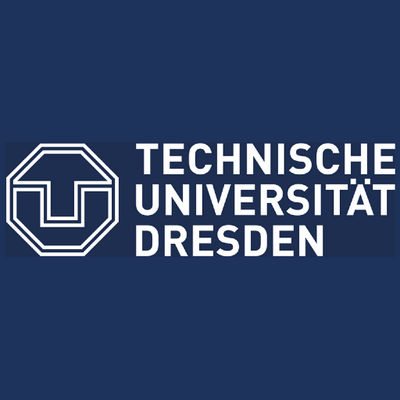Request Demo
Last update 08 May 2025
FLT3 x AXL
Last update 08 May 2025
Related
11
Drugs associated with FLT3 x AXLTarget |
Mechanism AXL inhibitors [+1] |
Active Org. |
Originator Org. |
Active Indication |
Inactive Indication |
Drug Highest PhaseApproved |
First Approval Ctry. / Loc. Japan |
First Approval Date21 Sep 2018 |
Target |
Mechanism AXL inhibitors [+2] |
Active Org. |
Originator Org. |
Active Indication |
Inactive Indication |
Drug Highest PhasePhase 3 |
First Approval Ctry. / Loc.- |
First Approval Date20 Jan 1800 |
Mechanism AXL inhibitors [+5] |
Active Org. |
Originator Org. |
Active Indication |
Inactive Indication- |
Drug Highest PhasePhase 1 |
First Approval Ctry. / Loc.- |
First Approval Date20 Jan 1800 |
111
Clinical Trials associated with FLT3 x AXLNCT06667973
A Phase 2, Open-label, Multicentre Study Investigating Tolerability and Efficacy of Gilteritinib in Combination With Fludarabine, Cytarabine and Idarubicin (FLAI) as Induction Therapy of Newly Diagnosed Non-M3 FLT3-positive Acute Myeloid Leukemia
The goal of this clinical trial is to evaluate the efficacy of gilteritinib as induction therapy in FLT3-positive adult acute myeloid leukemia patients. The main question it aims to answer is:
Is gilteritinib in combination to chemotherapy able to improve the complete remission rate of FLT3-positive AML?
Participants will receive up to 2 induction cycles with gilteritinib in combination with FLAI (fludarabine, cytarabine, idarubicine) and up to 3 consolidation cycles with gilteritinib and high-dose cytarabine.
Is gilteritinib in combination to chemotherapy able to improve the complete remission rate of FLT3-positive AML?
Participants will receive up to 2 induction cycles with gilteritinib in combination with FLAI (fludarabine, cytarabine, idarubicine) and up to 3 consolidation cycles with gilteritinib and high-dose cytarabine.
Start Date01 Jun 2025 |
Sponsor / Collaborator |
NCT06696183
Sequential Gilteritinib in Combination With Venetoclax and Azacitidine for Patients With Newly Diagnosed Acute Myeloid Leukemia (AML) and FLT3 Mutations Ineligible for Intensive Treatment
Explore the best tolerable and efficacious dose of Gilteritinib when combined with standard treatment with Venetoclax and Azacitidine in AML patients with FLT3 mutations which are ineligible for intensive chemotherapy
Start Date01 Apr 2025 |
Sponsor / Collaborator |
100 Clinical Results associated with FLT3 x AXL
Login to view more data
100 Translational Medicine associated with FLT3 x AXL
Login to view more data
0 Patents (Medical) associated with FLT3 x AXL
Login to view more data
62
Literatures (Medical) associated with FLT3 x AXL24 Apr 2025·Journal of Medicinal Chemistry
Discovery of Novel TYRO3/MERTK Dual Inhibitors
Article
Author: Zhou, Yubai ; Guduru, Shiva K. R. ; Yan, Dan ; Shelton Earp, H. ; Zhao, Jichen ; Frye, Stephen V. ; Kania, Catherine E. ; Stashko, Michael A. ; Kong, Deyu ; Huang, Daowei ; DeRyckere, Deborah ; Graham, Douglas K. ; Wang, Xiaodong ; Kireev, Dmitri ; Ding, Ransheng ; Huelse, Justus M.
01 Apr 2025·European Journal of Haematology
Advances and Challenges in Quizartinib‐Based FLT3 Inhibition for Acute Myeloid Leukemia: Mechanisms of Resistance and Prospective Combination Therapies
Review
Author: Vigna, Ernesto ; Martino, Enrica Antonia ; Labanca, Caterina ; Mendicino, Francesco ; Neri, Antonino ; Morabito, Fortunato ; Lucia, Eugenio ; Gentile, Massimo ; Rossi, Teresa ; Olivito, Virginia ; Bruzzese, Antonella
11 Apr 2024·Journal of Medicinal Chemistry
Discovery of Novel Macrocyclic MERTK/AXL Dual Inhibitors
Article
Author: Chen, Zhilong ; Wang, Xiaodong ; Kireev, Dmitri ; Earp, H. Shelton ; Zheng, Hongchao ; Frye, Stephen V. ; Stashko, Michael A. ; DeRyckere, Deborah ; Kong, Deyu ; Tian, Qiang ; Yan, Dan ; Graham, Douglas K.
Analysis
Perform a panoramic analysis of this field.
login
or

AI Agents Built for Biopharma Breakthroughs
Accelerate discovery. Empower decisions. Transform outcomes.
Get started for free today!
Accelerate Strategic R&D decision making with Synapse, PatSnap’s AI-powered Connected Innovation Intelligence Platform Built for Life Sciences Professionals.
Start your data trial now!
Synapse data is also accessible to external entities via APIs or data packages. Empower better decisions with the latest in pharmaceutical intelligence.
Bio
Bio Sequences Search & Analysis
Sign up for free
Chemical
Chemical Structures Search & Analysis
Sign up for free



